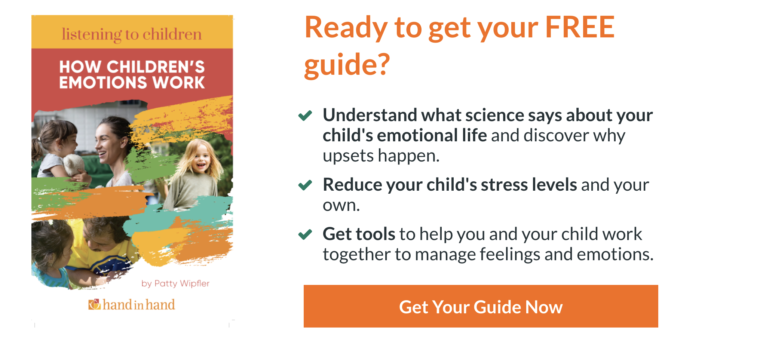Want to know the surprising truth about whining?
Whatever your child is whining about is never the real reason he or she is whining.
Just let that sink in for a second. Your child is not upset about the thing that's being complained about.
That's good new and bad news. The bad news is, you may ask yourself “how am I supposed to be a mind reader and know what the real reason is?”
The good news is that 95% of the time, your child whines because of one reason only: he or she feels disconnected from you.
When you understand that, that makes your job a whole lot easier. So what is that job exactly?
3 Steps to Stop The Whining:
Try filling your child's request just one time. Respond once, but if the whining continues, you can be sure that the real problem is the feeling of disconnection. If so, Set a gentle limit “No, I'm not going to cut your sandwich into triangles.” This gives her space to cry or tantrum if she needs to. Stay close, and offer warmth.
Offer yourself. Unloading the feelings in the presence of your caring, will cure that gnawing sense of helplessness or loneliness that causes your child to whine.
Go in for a vigorous snuggle instead of trying to solve her problem. Saying “Oh, you're my girl who loves triangular food! A swing around the kitchen for you!” with a hug and a swirl can get laughter going and jumpstart reconnection.
Here's how one parent used play to stop her daughter's complaining:
We were on holiday—and it was full on, with lots of new things to see and do. There was no routine, and Grandma and other people were always with us. So it is no wonder that my daughter, 3 ½, went off track; she was not getting much one-on-one attention.
One particular day was long, busy, and exhausting. By the afternoon, my daughter had started complaining constantly, and it was draining for me to try to make her happy.
I thought for a moment, exhaled, and started a silly game: “Oh, these whingy-whiny bugs are everywhere! I need to get them off of you!” I said, picking invisible little creatures off her body. I caught them behind her ears, in her nose, on her belly—everywhere. Then, I popped the pretend bugs in my mouth and chewed with delight.
Her giggles were fabulous! She wanted more and more of this whingy-whiny bug play.
After this, she was much more cooperative and easygoing. She asked for this game throughout the rest of our holiday, which helped her release tension wonderfully, with lots of laughing.
Children know how to release feelings of upset. To get started, they just need us to pay attention to them long enough to communicate that we'll stay with them through this rough patch.
Have you tried playing to break the pattern? Does your child's whining drive you nuts? Try out some of these suggestions and let us know how it goes for you!
How to Read Your Child's Deepest Emotions
Get your guide today and know exactly why your child whines, hits, refuses and melts down.
